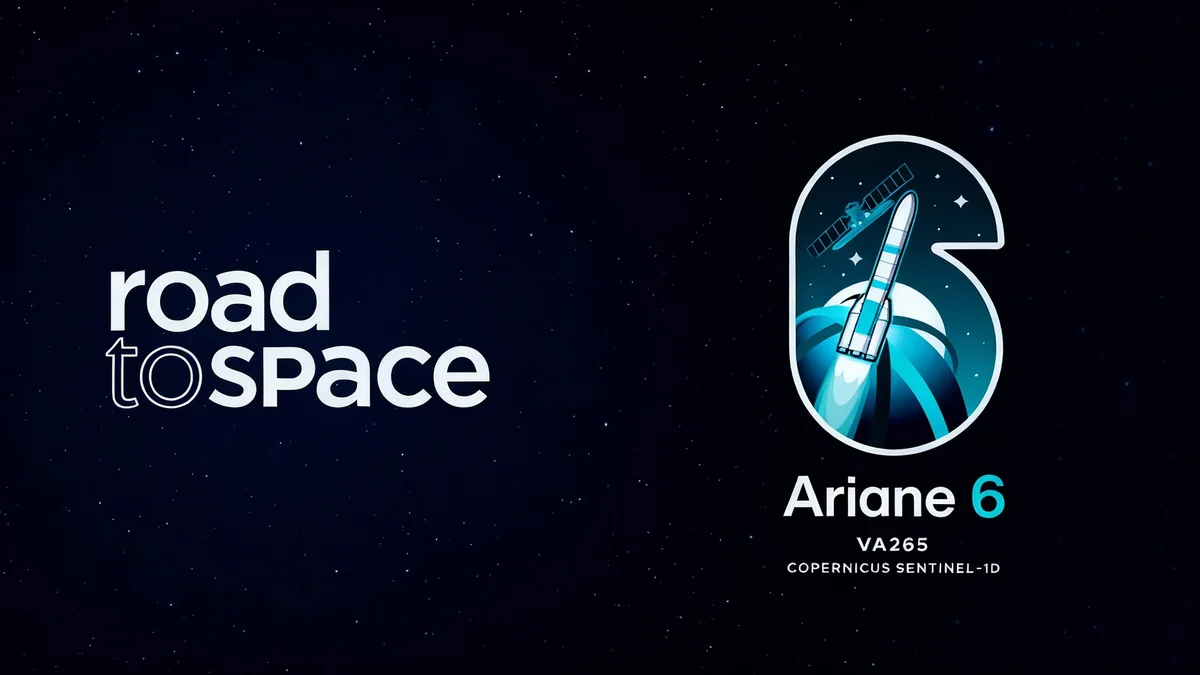Europe's next-generation heavy-lift rocket, the Ariane 6, is scheduled to launch for the fourth time today from the Guiana Space Centre in French Guiana. The mission aims to deliver the Sentinel-1D Earth-observation satellite into low Earth orbit, marking a significant step for the European Space Agency's monitoring capabilities.
Liftoff is targeted for 4:03 p.m. EST. This flight represents a crucial test of reliability for the Ariane 6 as it seeks to establish itself as a key player in the global launch market, following two consecutive successful missions earlier this year.
Key Takeaways
- What: The fourth launch of Europe's Ariane 6 rocket.
- When: Today, November 4, at 4:03 p.m. EST (2103 GMT).
- Where: Europe's Spaceport in Kourou, French Guiana.
- Payload: The Sentinel-1D Earth-observation satellite for the Copernicus program.
- Significance: Aims for a third consecutive successful operational flight, solidifying the rocket's role as the successor to the Ariane 5.
Mission Details: Deploying Sentinel-1D
The primary objective of today's mission, designated VA265, is to place the Sentinel-1D satellite into a precise low Earth orbit. This advanced satellite is a cornerstone of the European Union's Copernicus program, a comprehensive Earth-observation initiative.
Sentinel-1D is designed to provide continuous, all-weather, day-and-night radar imagery of Earth's surface. This capability is vital for a wide range of applications, from monitoring sea ice and oil spills to assisting in disaster response efforts for events like floods and earthquakes.
What is the Copernicus Program?
The Copernicus program is the European Union's Earth observation program, which looks at our planet and its environment for the ultimate benefit of all European citizens. It offers information services that draw from satellite Earth Observation and in-situ (non-space) data. The program is managed by the European Commission in partnership with the European Space Agency (ESA), the EU Member States and EU Agencies.
Once operational, Sentinel-1D will work in tandem with its counterpart, Sentinel-1C, to ensure timely and comprehensive data collection. It is set to replace the aging Sentinel-1A satellite, which has been in service for 11 years, far exceeding its original planned operational lifespan.
Advanced Onboard Technology
The satellite is equipped with a sophisticated C-band synthetic aperture radar (SAR) instrument. This technology allows it to capture high-resolution images regardless of cloud cover or lighting conditions.
Additionally, Sentinel-1D carries an Automatic Identification System (AIS) receiver. This tool enhances maritime surveillance by improving the detection and tracking of ships, which is crucial for maritime safety and security operations.
Ariane 6: Europe's New Workhorse Rocket
The Ariane 6 is the successor to the highly reliable Ariane 5, which was retired in July 2023 after nearly three decades of service. Developed by Arianespace for the European Space Agency, the new rocket is designed to be more versatile and cost-effective, capable of handling a variety of missions, from government to commercial payloads.
The rocket's journey began with a challenging debut test flight in July 2024. However, it quickly proved its capabilities with two fully successful operational launches in March and August of this year. Today's flight aims to build on that success and achieve a third consecutive victory.
Today's launch will be Europe's fifth orbital mission of 2025. This includes two previous Ariane 6 flights and two successful missions by the smaller Vega C launcher in April and July.
Arianespace is counting on the Ariane 6 to maintain Europe's independent access to space and to compete effectively in a market increasingly dominated by private companies.
A Competitive Global Launch Market
While this launch marks a significant milestone for Europe, it also highlights the competitive nature of the modern space industry. European launch provider Arianespace is working to increase its launch frequency to meet growing demand.
The scale of the competition is clear when compared to other major players. For instance, SpaceX has already conducted 140 launches of its workhorse Falcon 9 rocket in 2025 alone. A majority of those missions have been dedicated to building out its Starlink satellite internet constellation.
Successfully establishing the Ariane 6 as a dependable and regularly available launch vehicle is therefore a top priority for ESA and its partners. Each successful mission, like the one planned for today, is a critical step toward securing a strong position in the future of spaceflight.





